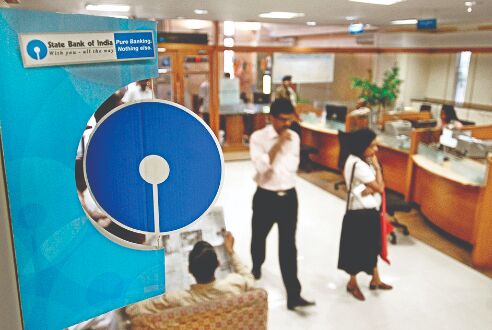'Household debt may have declined to 34% in Q1 FY22'

Mumbai: The household debt as a percentage of gross domestic product (GDP) may have declined to 34 per cent in the first quarter of 2021-22, according to an estimate by the State Bank of India's research report Ecowrap.
The COVID-19 pandemic has resulted in a spike in household debt to the GDP rate. As per the report, it rose sharply to 37.3 per cent in 2020-21 from 32.5 per cent in 2019-20.
We estimate that household debt as a percentage of GDP has declined to 34 per cent in Q1 FY22 with the commensurate rise in GDP in the first quarter, though it has increased in absolute terms, the research report released on Wednesday showed.
In absolute numbers, the household debt has increased to Rs 75 lakh crore in the first quarter of FY22 from Rs 73.59 lakh crore in FY21, it said.
It said the recently released India Debt & Investment Survey (AIDIS) report for 2018 showed an increase in the average amount of debt among rural as well as urban households between 2012 and 2018.
The average amount of debt increased by 84 per cent and 42 per cent, respectively, for rural and urban households for the six-year period ended 2018, the SBI research report said.
The state-wise trend indicates that the rural households' average debt more than doubled in 18 states for the six-year period ended 2018, while seven states witnessed the same for urban households.
Importantly, five states, including Maharashtra, Rajasthan and Assam, witnessed a simultaneous doubling in average debt across urban and rural households during this period, the report said.
As per the AIDIS report 2018, the average amount of debt among rural households stood at Rs 59,748 and in urban households, it was Rs 1.20 lakh.
In 2021, the rural household debt is expected to increase to Rs 1.16 lakh and urban to Rs 2.33 lakh, indicating that COVID impacted the households significantly, according to the SBI research report.
It said the debt-asset ratio, which is an indicator of household indebtedness, has increased to 3.8 in 2018 from 3.2 in 2012 for rural households. For urban households, the ratio has risen from 3.7 to 4.4.
Kerala, Madhya Pradesh and Punjab were the three states that witnessed a deterioration of at least 100 bps (basis points) in debt asset ratio over the six-year period ended 2018, the report said.
The good thing is that in rural India, the share of outstanding cash debt from non-institutional credit agencies has declined significantly to 34 per cent in 2018 from 44 per cent in 2012, it noted.
Notably, almost all states have registered a steep decline in non-institutional credit in rural areas, indicating the increase in formalisation of the economy, the report said.
The share of non-institutional credit has declined significantly in the case of Bihar, West Bengal, Rajasthan, Haryana and Gujarat. In Haryana and Rajasthan, which witnessed loan waiver schemes, the share of non-institutional credit declined contrary to popular perception, it said.
This could be explained by a significant increase in penetration of KCC (Kisan Credit Cards) in these two states. Our estimates show that the number of KCC cards has jumped by 5 times over the 7 year period ended 2020, the report said.



